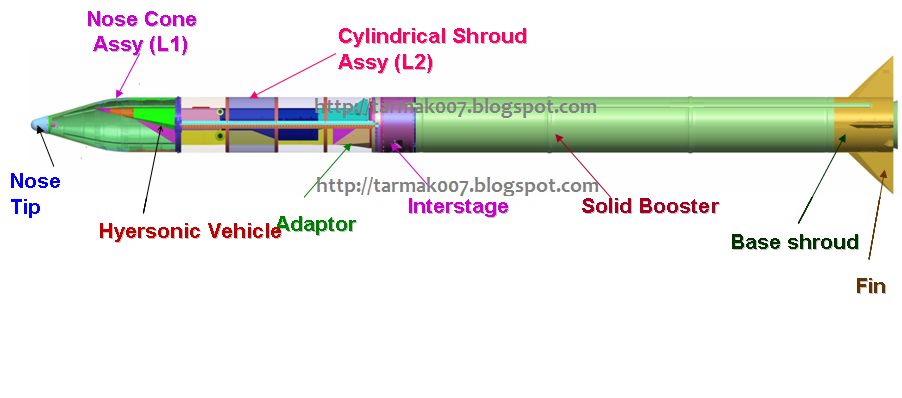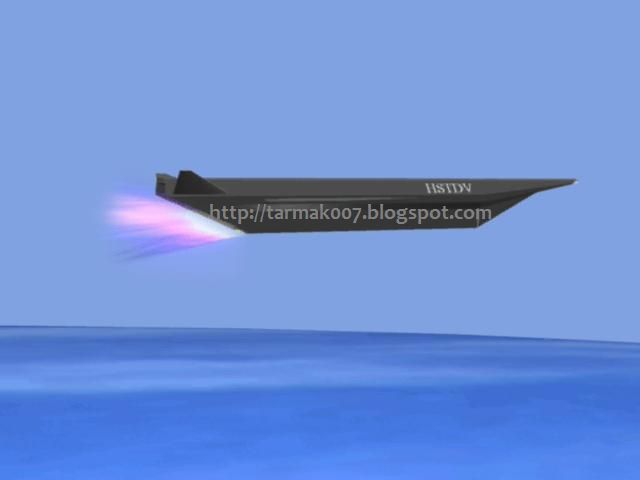Hypersonic Brahmos engine is ready what we lack is materials to protect avionics in high temperature generated out of air friction.
We are working towards all problems involved piecemeal ...
Hence the time delays ....
Dr. R. Palaninathan
1.
‘Ablation Studies on Re-entry Capsule’: Sponsorted by Advanced Naval System Programme (ANSP), Defence Research and Development Organization,
2009-2010 (on going).
Space vehicles, while re-entering Earths atmosphere, encounter aerodynamic heating, intensity of which depends on the type of mission. Intercontinental ballistic missiles are subjected to severe (hyper thermal) heating conditions. Ablative thermal protection systems are required for such vehicles, wherein thermal energy is expended by way of sacrificing the material. Composite materials, carbon-carbon for nose and carbon-phenolic for after body, are used. This project involved development of finite element based software to model the surface recession (ablation) with time. Two models: (i) material removal by oxidation of carbon at high temperatures (chemical ablation) using analytical expressions and (ii) erosion of carbon-phenolic layered material by aerodynamic surface shear (mechanical ablation) are used.
Sketch of Re-entry Capsule
2. ‘Thermostructural Analysis of Metallic Thermal Protection System’: Sponsored by Vikram Sarabhai Space Centre, Thiruvananthapuram, Indian Space Research Organisation, 2008-09.
Manned space missions returning to the Earth require thermal protection system to absorb the thermal energy due to aerodynamic heating. Of the four mechanisms of thermal protection: (i) heat sink, (ii) cooling, (iii) surface insulation and (iv) ablation, the third one is considered suitable for vehicles used in multiple missions, such as space shuttle. In order to avoid / reduce damage, requiring extensive repair before next flight, metallic thermal protection systems (MTPS) are considered suitable. ISRO is presently involved in the design and development of MTPS for its Re-usable Launch Vehicle (RLV) programme. A finite element method based software has been developed as a design tool to carry out thermal and structural analyses of MTPS.
Sketch of a Metallic Thermal Protection System
3. ‘Erosion Modeling of HSTDV Nose Tip’: Sponsored by Defense Research and Development Laboratory, Hyderabad, Defense Research & Development Organization, 2003-04.
The aerospace vehicles that fly at mach > 5 require thermal protection system (TPS) to withstand the intense thermal loads during flight with in the atmosphere. The TPS are made of ablative materials, either high temperature ablators (HTA) or low temperature ablators (LTA), depending on the mission type. This work was concerned with modeling of surface recession of carbon-carbon composite (HTA) nose tip of hypersonic technology demonstrator vehicle (HSTDV), under development. The recession was modeled in two ways: i. chemical ablation due to oxidation of carbon and ii. mechanical ablation due to erosion of surface material by aerodynamic shear. A finite element based software (employing 8-21 variable node solid elements) for the thermo-mechanical analysis with the capability for moving the boundary to the extent of surface recession at each time step has been developed.

4. ‘S200 Motor Case Stress Analysis’: Sponsored by Vikram Sarabhai Space Center, Trivandrum, Indian Space Research Organization, 2003-04.
S200 Motor is the strap-on for the augmented Geostationary Satellite Launch Vehicle (GSLV-MkIII) under development. Due to its large size (about 20 m long and 3.2 m dia.), the motor has to be made in segments and connected using tang-clevis-pin type joints. This joint is the weak link in the construction. The failure of Space Shuttle Challenger is the case in point. The work involved analyses of segment joint, bucket-flange joint and for other handling conditions. 3-D solid element with both geometric and material nonlinear capabilities was employed. The effects of friction and contact pressures between the mating surfaces were accounted. The pinhole enlargement due to the plastic strain and the effects of friction in reducing the same were studied.
Segment Joint - Stress Concentration Regions
5. ‘Software for Nozzleless Booster Structural Analysis’: Sponsored by Defense Research and Development Laboratory, Hyderabad, Defense Research and Development Organization, Ministry of Defense, 1998-99.
The aim of this study is to estimate the current health of an aging structure from the vibration response. Damage of the structure is defined in terms of fatigue cracks. The focus is on identifying the location and size of fatigue cracks in a vibrating system, from the vibration response time histories. The efficiency and usefulness of probabilistic filtering techniques is being explored for the damage identification. Experimental studies are also being carried out to complement the theoretical/computational developments.


















